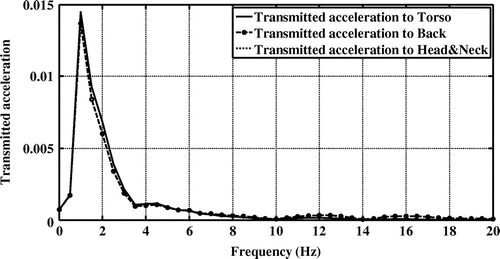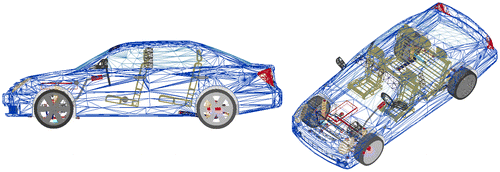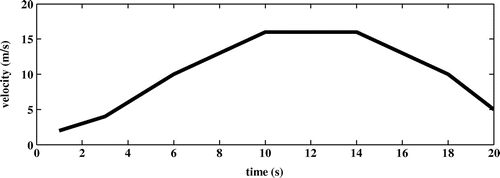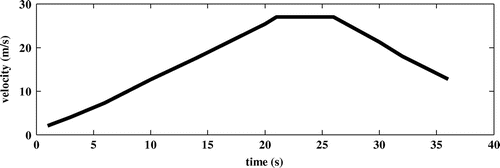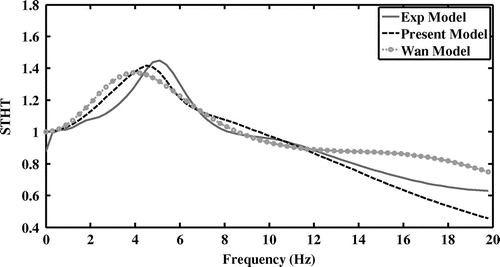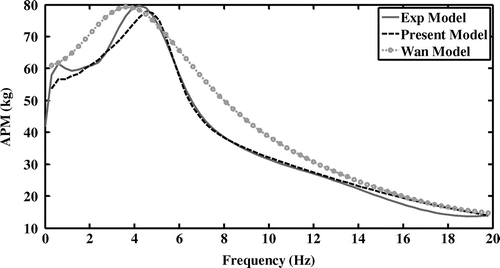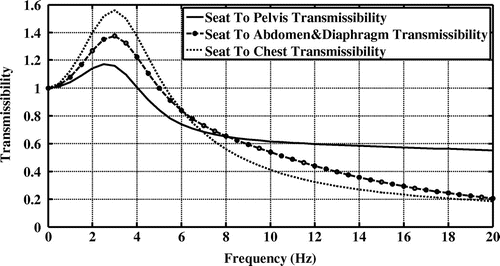Figures & data
Table 1. GA parameters
Figure 5. The transmitted accelerations to the human body of road-1 and road-2 excitations at the first driving cycle.
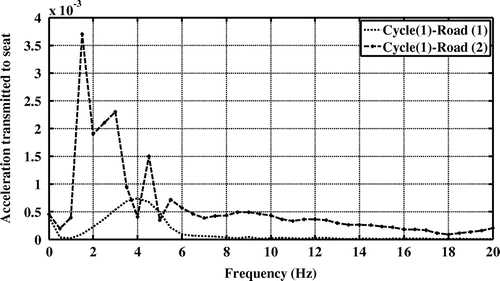
Figure 6. The transmitted accelerations to passenger’s seat for road-1 and road-2 excitations in the second driving cycle.
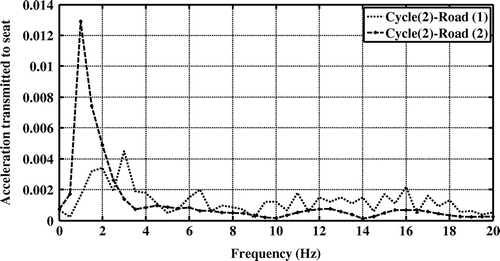
Table 2. The obtained experimental data by Boileau and Rakheja (Citation1988)
Table 3. The optimal parameters for a 6-DoF model
Table 4. Error criteria comparison between Wan’s model and 6-DOF present model
Figure 12. Transmitted accelerations to the human body for three body segments including pelvis, abdomen/diaphragm and chest of road-1 excitation in the first driving cycle.
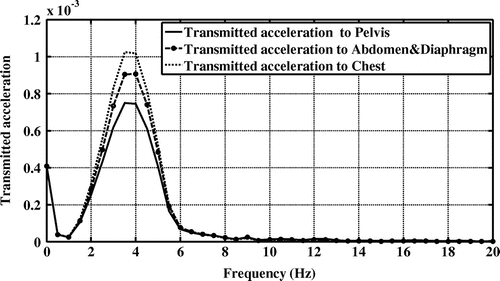
Figure 13. Transmitted accelerations to the human body for three body segments including torso, back and head/neck of road-1 excitation in the first driving cycle.

Figure 14. Transmitted accelerations to the human body for three body segments including pelvis, abdomen/diaphragm and chest of road-2 excitation in the first driving cycle.
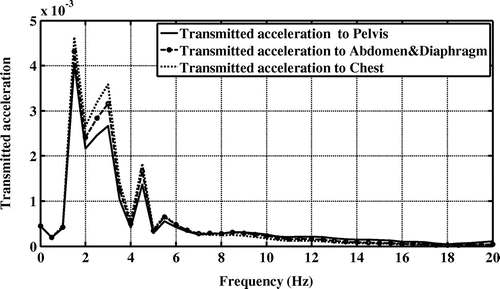
Figure 15. Transmitted accelerations to the human body for three body segments including torso, back and head/neck of road-2 excitation in the first driving cycle.

Table 5. The transmitted accelerations results for all body segments respect to road-1 excitation in the first driving cycle
Table 6. The transmitted accelerations results for all body segments respect to road-2 excitation in the first driving cycle
Figure 16. Transmitted accelerations to the human body for three body segments including pelvis, abdomen/diaphragm and chest of road-1 excitation in the second driving cycle.
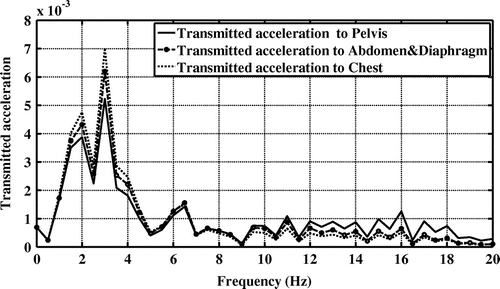
Figure 17. Transmitted accelerations to the human body for three body segments including torso, back and head/neck of road-1 excitation in the second driving cycle.
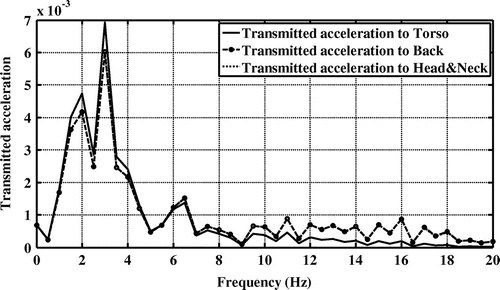
Figure 18. Transmitted accelerations to the human body for three body segments including pelvis, abdomen/diaphragm and chest of road-2 excitation in the second driving cycle.
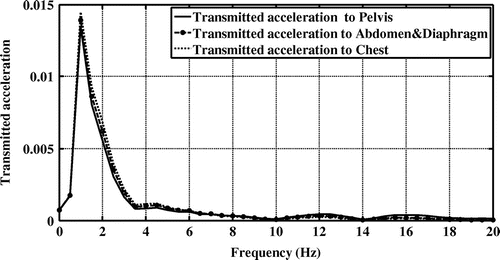
Figure 19. Transmitted accelerations to the human body for three body segments including torso, back and head/neck of road-2 excitation in the second driving cycle.
